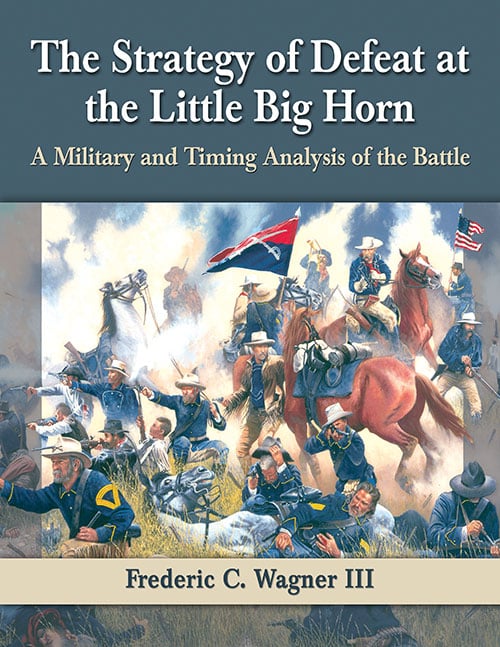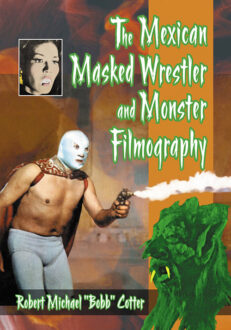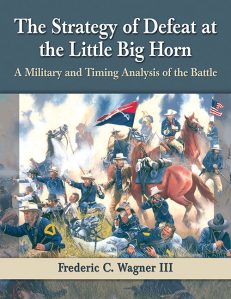The Strategy of Defeat at the Little Big Horn
A Military and Timing Analysis of the Battle
$39.95
In stock
About the Book
The battle that unfolded at the Little Big Horn River on June 25, 1876, marked a watershed in the history of the Plains Indians. While a stunning victory for the Sioux and Cheyenne peoples, it initiated a new and vigorous effort by the U.S. government to rid the west of marauding tribes and to realize the ideal of “Manifest Destiny.” While thousands of books and articles have covered different aspects of the battle, few if any have analyzed the tactics and chronology to arrive at a satisfactory explanation of what befell George Armstrong Custer and the 209 men who died alongside him. This volume seeks to explain the circumstances culminating in the near-destruction of the 7th Cavalry Regiment by a close examination of timing, setting every event to a specific moment based on accounts of the battle’s participants.
About the Author(s)
Bibliographic Details
Frederic C. Wagner III
Format: softcover (8.5 x 11)
Pages: 296
Bibliographic Info: 55 photos, 12 maps, appendices, notes, bibliography, index
Copyright Date: 2014
pISBN: 978-0-7864-7954-2
eISBN: 978-1-4766-1881-4
Imprint: McFarland
Table of Contents
Acknowledgments ix
Preface 1
1. Drums Along the Rosebud 7
2. The Busby Bend 14
3. Davis Creek and the Divide 20
4. The Flip Side of the Coin 36
5. Plan A: Tullock’s Creek 39
6. Crossing the Divide 43
7. Benteen’s Left Oblique 48
8. A Change of Plans 52
9. The Little Big Horn Valley 67
10. 3,411 and Retreat 94
11. A List of Messengers 107
12. Into the Tunnel 110
13. Ford B: Attack or Reconnaissance 117
14. Scouts 123
15. “Benteen Is Coming!” 129
16. Custer Moves North 136
17. Hell in a Very Small Place 146
18. The Graveyard Watch 158
19. Too Late—Reno Follows 170
20. Designed to Win, Doomed to Fail 177
The Timelines:
A. June 24: To the Busby Camp and Varnum’s Departure; 5:00 a.m.–9:20 p.m. 183
B. June 24–25: Busby Camp to Halt One; Sunset, 8:50 p.m.–Sunrise, 5:10 a.m. 184
C. June 25: Halt One to Custer’s Arrival at the Crow’s Nest; 3:41 a.m.–8:35 a.m. 185
D. The Curtiss Incident; 8:15 a.m.–10:00 a.m. 186
E. Officers’ Call—Crow’s Nest to the Divide; 8:35 a.m.–11:45 a.m. 187
F. Divide Crossing to the Flats; 11:45 a.m.–1:05 p.m. 189
G. Benteen’s Scout; 12:10 p.m.–1:50 p.m. 192
H. Custer/Reno Separation to Reno’s Dismount; 1:05 p.m.–1:36 p.m. 194
I. From Separation to 3,411; 1:05 p.m.–1:56 p.m. 196
J. The Valley Fight—Dismount to Retreat; 1:35 p.m.–2:23 p.m. 198
K. Scouts; 11:30 a.m.–4:35 p.m. 201
L. Reno’s Retreat to Benteen’s Arrival; 2:11 p.m.–3:05 p.m. 206
M. Boston Custer; 12:04 p.m.–2:42 p.m. 208
N. Messengers; 12:13 p.m.–2:41 p.m. 209
O. Benteen: Reno Creek to Reno Hill; 1:50 p.m.–3:05 p.m. 211
P. The Pack Train; 10:40 a.m.–4:17 p.m. 213
Q. Benteen’s Arrival to the Arrival of the Packs; 2:57 p.m.–4:17 p.m. 215
R. The Approach to 3,411 and Ford B; 1:38 p.m.–3:07 p.m. 218
S. Ford B to Calhoun Hill; 2:49 p.m.–3:44 p.m. 221
T. Calhoun Hill Deployment; 3:14 p.m.–3:37 p.m. 223
U. Keogh to Custer on Cemetery Ridge; 3:27 p.m.–3:58 p.m. 225
V. Cemetery Ridge to the End; 3:54 p.m.–4:40 p.m. 228
W. Warriors; 1:02 p.m.–5:14 p.m. 230
X. Weir Peaks and Return; 3:10 p.m.–5:30 p.m. 235
Y. Stragglers; 12:42 p.m.–4:30 p.m. 239
Notes to Timelines 241
Appendix A. Place Names and Distances 248
Appendix B. Vegetation at the Little Big Horn 253
Appendix C. Marker Placement and Artifact Analysis 254
Appendix D. Indian Recollections of the Time the Battle Began 265
Chapter Notes 266
Bibliography 278
Index 281
Book Reviews & Awards
- “the clear product of exhaustive research and reflection that should serve as an example to others who attempt to analyze the Little Big Horn, decipher its sequence of events and explain its outcome…recommend”—The Battlefield Dispatch
- “with all that has been written on the Battle of Little Big Horn, it is surprising to find a study that brings fresh insight to the subject. This book accomplishes the task through a detailed analysis of times, durations, and speeds mentioned in witness accounts. To sift through all the narratives and construct a lucid and convincing picture is quite a challenge. Frederic Wagner has risen to that challenge admirably”—The Journal of America’s Military Past
- “a must-have”—Roundup Magazine
- “Excellent…a necessity…recommended…outstanding—a prime source for the serious reader”— Alan R Beattie, Americana Books (UK)






